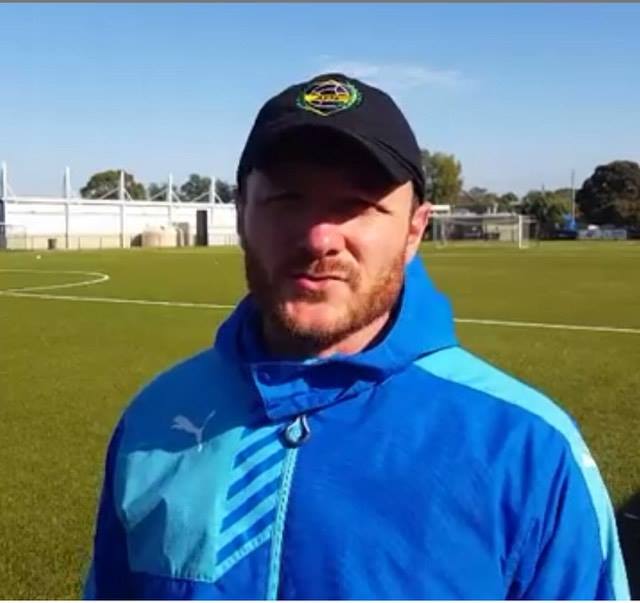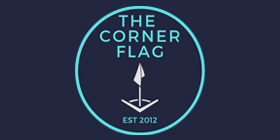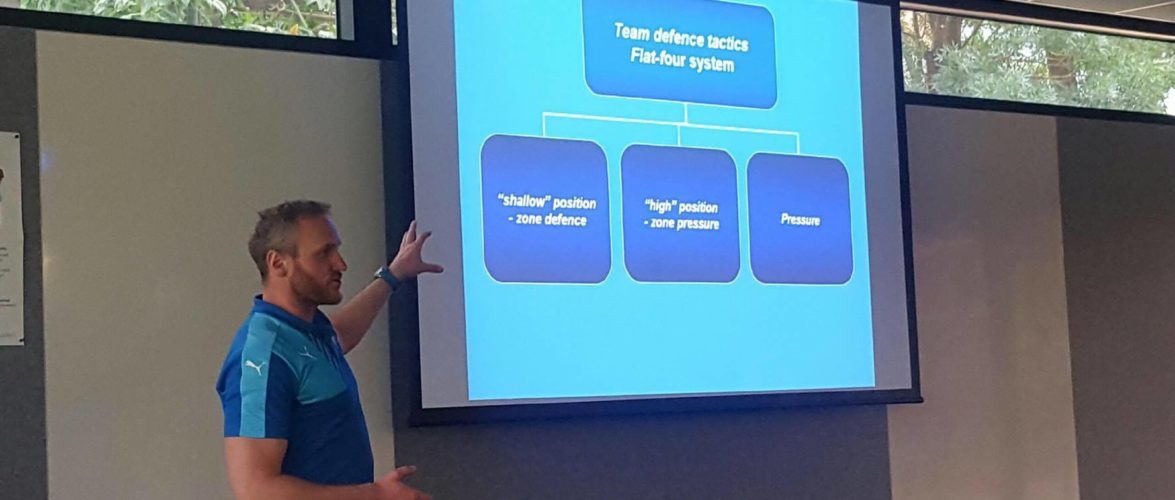Real Madrid’s recent last-gasp 1-1 draw with rivals Barcelona saw Zinedine Zidane’s men stretch their undefeated run to 34 competitive games dating back to April 6. While much of the focus centered on the usual protagonists in Messi, Ronaldo and their stellar attacking supporting cast, the game was largely dictated by those in midfield.
The Los Blancos fielded the rejuvenated Spaniard Isco in the centre of the park alongside Croatian pair Luka Modric and Mateo Kovacic, with the latter leaving his mark on the contest by assisting Sergio Ramos’ stoppage-time equaliser. The two compatriots might be separated by nine years in age, but their career trajectories share parallels. Both are products of the renowned Dinamo Zagreb youth system, which is rated as one of Europe’s best academies, having arrived in the Croatian capital in their teens.
One man who saw the rise of the latter through the club’s youth ranks was Andjelko Ivanjko, who works as a team manager and coach at the Maksimir Stadium, holding the role since April 2008. He was recently in Australia as part of a scouting trip along with several other European coaches and scouts.
In that time the 35 year-old has overseen the development of several high-profile players who now ply their trade in some of Europe’s top leagues – including the likes of Josip Brekalo (Wolfsburg), Alen Halilovic (Hamburg), Tin Jedvaj (Bayer Leverkusen), Andrej Kramaric (Hoffenheim), Robert Muric (Ajax), Marko Pjaca (Juventus), Jozo Simunovic (Celtic), Sime Vrsaljko (Atletico Madrid), as well as current Dinamo squad member and Croatian international Ante Coric.
These players have all continued a fine tradition at the ‘Modri’ of producing some of the nation’s best footballing talent such as Robert Prosinecki, Zvonimir Boban, Dario Simic, Niko Kranjcar, Eduardo, Vedran Corluka, Luka Modric, Dejan Lovren and Milan Badelj.
Naturally, Ivanjko is proud of the club’s academy success, providing a revealing statistic to highlight Dinamo’s conveyor belt of talent. “We sat down a few months ago to analyse the players born 1992-1998 who have come through our ranks and noted that 90% of them now play in the top two divisions of leagues across Europe and are thus professional footballers.”

Those not able to make a living from the round ball game are provided the opportunity by the club and its contacts across the Atlantic to join American colleges, where they continued their playing careers while preparing themselves for life outside of football.
With statistics like that, it is no wonder why the CIES Football Observatory has rated the club’s academy as the third best in the world behind Ajax and Partizan, ahead of many of Europe’s super clubs as well as other acclaimed institutes such as Sporting and Valencia.
However, Ivanjko is quick to point out that it wasn’t always like this.
“Our main strength now is our academy, but it was only 10 years ago when we started taking it more seriously. Academy directors Bozidar Sikic, Romeo Jozak (who toured Australia in 2013), Marijan Vlak and now Ivo Susak have made a big impact during this period when our academy grew, forcing us to change our philosophy.
“Now we have around 200 elite players, mostly from Croatia, with our teams competing on the highest level in Europe where they have achieved very good results.”
While many clubs in Australia and across the globe aim to promote a handful of youth products into the senior side at best, the approach of the 18-time Croatian champions is in stark contrast to that line of thinking.
“Currently we have around 10 academy players in the first team and they are all doing very well. We aim to ensure that 50% of the senior side is made up of Dinamo youth graduates, while the rest of the side is made of foreigners (35%) and non-academy Croatian players (15%),” Ivanjko adds.
A graduate of the Faculty of Kinesiology at the University of Zagreb as well as the Business School of Management in Zurich and the UEFA Academy in his home city, the lifelong ‘Plavi’ gave a detailed insight into the club’s youth academy structure, which is made up of 10 different age groups from the 8s to the 19s and in total consists of 185 players.
At the top of the hierarchy is the academy director who oversees the entire program with coaching, management and medical staff all reporting back to him. Each age group has a different coach, with coaches for individual training and fitness trainers also present. The management staff consists of a youth coordinator from the 8s to 13s, in addition to database administrators and match analysts, while a team of medical staff is sent to work with the various age groups and includes club doctors, physiotherapists and psychologists.
The most junior of categories (8s-11s) have three-four training sessions a week, while their counterparts in the above two age groups (12-13s) have four-five sessions per seven days. The workload intensifies in the 14s and 15s category with players subject to 5-6 sessions a week, while those age groups above have six-seven sessions, with all groups in training for 10 months a year.
All junior teams must mirror the playing style deployed by the first team – a 4-3-3 formation is utilised, although players are taught to be adaptive and learn to play in other tactical systems with technical components, high-intensity pressing, team-focused drills and discipline being one of many essential elements prioritised.
Training sessions have restricted access. Parents are not allowed into the ground to observe, which is left to the coaches, club staff and any scouts which might be present.
Dinamo generally relies on transfer fees and sponsorship to keep the academy afloat, with Ivanjko noting the unofficial nature of its scouting network at times. “We have people around the country that are Dinamo people who notify us of any talents in their respective regions, and this doesn’t only apply to Croatia but to surrounding countries like Bosnia, Slovenia, and Austria and beyond.”
With a population totalling just 4.1 million (approximately 500,000 less than Melbourne), Croatia continuously punches above its weight not just in football, but across all sporting levels. The 1998 World Cup Bronze medallists have fielded more players in the Champions League this term than traditional powers such as England and Italy, as well as having one of the best medals-per-capita rates at this year’s Olympics.
Ivanjko is not surprised by those figures and gave an insight into the nation’s sporting culture while emphasising the importance strong coaching has played in all of this. “Croatian players were always an important part of all team sports in Europe. And not just team sports as you know. Now we are one of the strongest teams in football, basketball, handball, water polo and so on.
“If we just remember players like Davor Suker, Zvonimir Boban, Robert Prosinecki, Drazen Petrovic, Dino Radja and many others. Nowadays we have Luka Modric, Ivan Rakitic, Mateo Kovacic, Andrej Kramaric, Ante Tomic, and Bojan Bogdanovic.
“Just mentioning these names makes us so proud as a nation. Sport is always an important part of Croatian society and it is easier maybe to get a chance in smaller country in Croatia then in bigger ones where you have more opportunities and distractions.
“Also the level of talent and hard work is very high in Croatia, we have fantastic coaches that can finalise those players to become big stars.”
Despite possessing one of the most gifted international sides on paper, the Vatreni have failed to utilise this talent to win a major international trophy and, while this irks Ivanjko, he believes many different factors need to align for Croatia to achieve a maiden international honour.
“In order to achieve a big result at the World Cup or Euros, a lot of things need to come together. Not just the players but also a bit of luck, a bit of atmosphere, a bit of chemistry between players as well as many other internal and external factors.
“If all of these come together it could produce a good result. That does not mean we will win, though, because all the big teams in world are also doing big things and putting a lot of resources to win. For example, who would have guessed that Portugal would be champions of Europe?”
While Croatia entered the European Union in 2013, Ivanjko noted how its accession has given the club additional challenges in keeping its best players at the Maksimir, with clubs from fellow member states unrestricted in their attempts to poach some of their brightest academy products away from their homeland.
He also lamented how today’s generation are not utilising the benefits of playing street football as much as generations past as after-school hours are nowadays used for non-physical activities such as video games and social media. But he also has questions for his guest country while on tour down under, where he spent the past week conducting training sessions, making presentations and observing the country’s football landscape.
He asks why the FFA resists allowing clubs in the respective second tiers around the country from entering the top flight if they can meet certain criteria and standards as is the case in the United States. He also ponders what has become of the Melbourne Knights in the post-NSL era and asks whether the club still has the capabilities of producing a Viduka or Simunic in the modern era given its marginalised position within the game today.
From his week-long visit, Ivanjko concluded that the high level of athleticism, hard work ethic and commitment, multicultural nature and financial stability are some of the round ball’s strengths in this country, while stressing the low level of tactical knowledge, lack of clear strategy and limited good talent selection/identification process as being weaknesses.
“For a country which has over 1 million football players, it is strange that not more Australians cannot play at the highest level of European football.
“Now Australia’s most valuable players in Europe are Rogic from Celtic and Jedinak from Aston Villa. If we recall names such as Kewell, Viduka, Kalac and so on from the 2006 World Cup then we can conclude that Australian national team can be much better. And for me the key problem may be in youth national teams. I do not know situation very well but I can only make assumptions about that.
“Furthermore, the lack of quality coaches, education and strategy are big issues that the FFA and other member federations must deal with in order for football in this country to progress further.”
Despite these sentiments, Ivanjko was more than impressed by the quality on offer during his time in Melbourne and ultimately concluded that the level of Australian players is better than that of the United States. Ultimately, his visit to the country’s shores provided an invaluable insight into the workings of major European football factory whose reputation continues to grow as the Dinamo’s exports persist in their progress across the continent.
An Australian equivalent might be years in the making, but the model practiced in Zagreb is a good template for home-grown coaches, instructors and football figures to work with.

